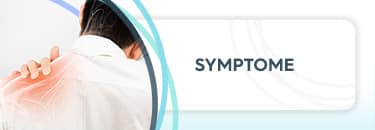

TP1 and TP2 together form the cluster Facto rs. In TP2 (Protein Production), these proteins are produced recombinantly. The mechanism of action of the biologically active proteins for formation of tendon-bone-junctions in the adult system is elucidated within subproject (TP) 1 (Biological Mechanisms). The work tasks within the research unit are divided between four clusters: Facto rs, Manufacture/Carrier, Release, In vivo -Use. For fixation of the implant within the tissue stitching will be performed on the tendon side, and bone anchors will be used on the bone side./em> The nanoparticles represent different binding and release systems. The gradients existing in vivo are here mimicked by gradients in the mechanical properties as well as gradients in spatial and temporal release orf bioactive proteins. die Knochenoberfläche, sind aber nicht lasttragend. Die Fäden dienen der Anpressung des Implantats an den Sehnenstumpf bzw. Die Ermittlung der optimalen Implantationstechnik (Einsatz des Implantats in Augmentation oder Interposition) ist Teil des Arbeitsprogramms von TP8 hier ist die Augmentation dargestellt. Rechts vergrößert: Mit dem Implantat versorgter Defekt. Right enlarged: Defect with implant positioned in augmentation technique.hematische Darstellung des Implantats an der Rotatorenmanschette (die rechte Schulter ist in der Vorderansicht dargestellt). Schematic drawing of the implant at the rotator cuff (right shoulder, front view). In the second funding period (started in January 2019) seven subprojects are included. In the first funding period, eight subprojects contributed to the research unit. By this conception, it will be safe for the patient as well as efficient and as simple as possible in its production and use, thereby promoting its translation into a commercial product. Consequently, it is bioinspired and biomimetic but cell-free and supposed to mediate bioactivity. figure) is supposed to restore a tendon-bone junction, both in vitro and in vivo. By virtue of being equipped with different gradients, the implant (cf. In the human setting, the necessary dimensions are about 25 mm in length (mediolateral) and 30 to 40 mm in width (anteroposterior). The implant is supposed to work for the rotator cuff which is a complex of several muscles and their respective tendon-bone-junctions at the shoulder (cf.

The tissue formation after use of the implant is verified in vivo in small and large (sheep) animal models. The fixation of the implant on the bone side is achieved via commerically available bone anchors. For maintenance of long-term release, BMP2-aggregates and amyloid variants of Smad8 L+MH2 will be produced. In order to achieve spatially and temporally controlled release of these three proteins they are applied via nanoparticulate release systems in a controlled manner. The latter is a modified transcription factor that induces the formation of tendon cells and tendon tissue from adult stem cells. The mats are modified on the fibre surfaces and are equipped with varying amounts of nanoparticles: Polymeric nanoparticles will serve as release systems for biologically active proteins.Īpart from Bone Morphogenetic Protein (BMP)-2 (for bone region) and Transforming Growth Factor (TGF)-β (for cartilage region), Smad8 Linkerregion + Mad Homology Region 2 (Smad8 L+MH2) is used as a novel factor. Moreover, the mechanical properties of the fibre mats will mimick the in vivo-situation. the use of sacrificial fibres which will dissolve under physiological conditions) in order to provide a porosity and permeability that will allow survival and biological function of immigrating cells as well as exchange of nutrients and waste products. The fibre mats will be subjected to appropriate treatments (e. These mats will have parallel fibre alignment (on the tendon side) and non-oriented fibre alignment (bone side) within the same mat. As basic material electrospun fibre mats from biodegradable polymers (mainly based on polycaprolactone) will be used. Aim of the research unit is to demonstrate, in principle, the feasibility and exemplary generation of a graded implant for future use at the tendon-bone junction of the rotator cuff.


 0 kommentar(er)
0 kommentar(er)
